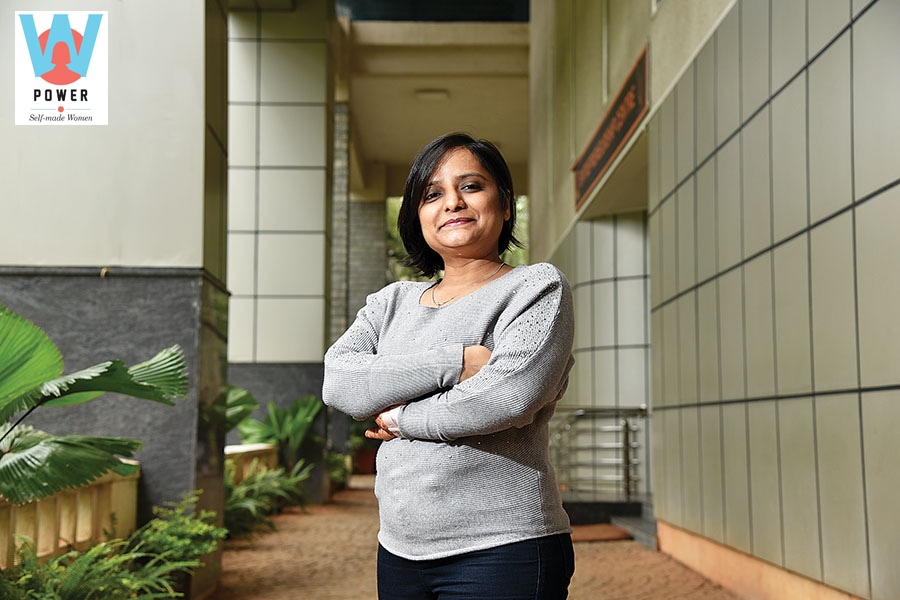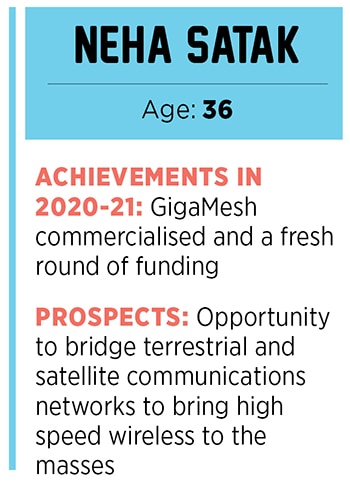
Neha Satak: Taking high-speed internet to Bharat
Astrome Technologies' Satak calls herself an innovator at heart, and is using creative methods to take high-speed internet to the masses, including rural India

Neha Satak, co-founder and CEO of Astrome Technologies
Image: Hemant Mishra for Forbes India
Neha Satak, co-founder and CEO of Astrome Technologies, sees herself as an innovator at heart. This year, Astrome is seeing the commercialisation of the high-capacity wireless technology that Satak and her co-founder Prasad HL Bhat, who is the chairman and the CTO of the company, have developed over the last six years—for both terrestrial and satellite communications.
Satak holds a PhD from Texas A&M University and a Master’s in aerospace engineering from the Indian Institute of Science (IISc) in Bengaluru. She worked as a postdoctoral research associate with the Air Force Research Lab in the US. She is also one of two Indian women to win the prestigious Karman Fellowship for space tech innovators this year.
“At Astrome, the idea was, we wanted to develop innovative high-bandwidth technologies to deliver internet services at affordable cost to everyone around the world, including people in remote and rural areas,” Satak tells Forbes India.
(This story appears in the 30 November, -0001 issue of Forbes India. To visit our Archives, click here.)




 The significance of this tech is that it can support gigabit-speed wireless backhaul and “having that backhaul capacity wirelessly holds the key to delivering 4G and
The significance of this tech is that it can support gigabit-speed wireless backhaul and “having that backhaul capacity wirelessly holds the key to delivering 4G and 




